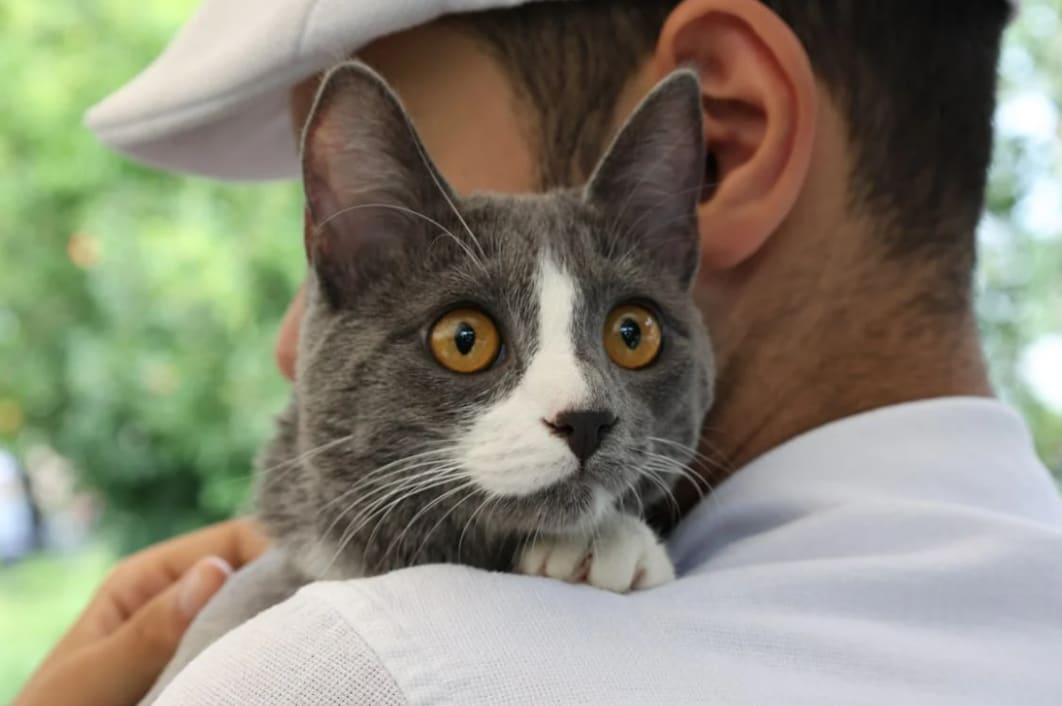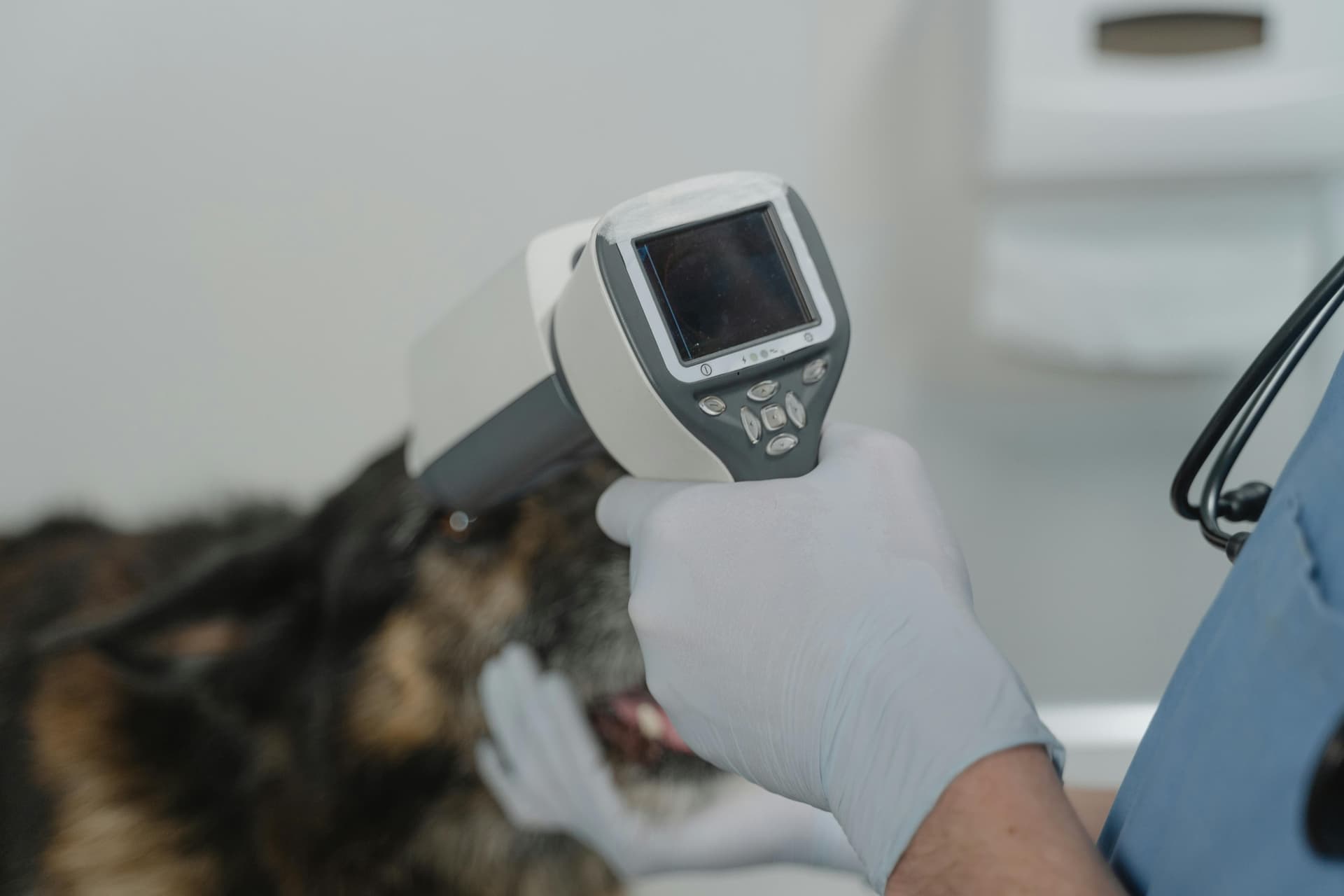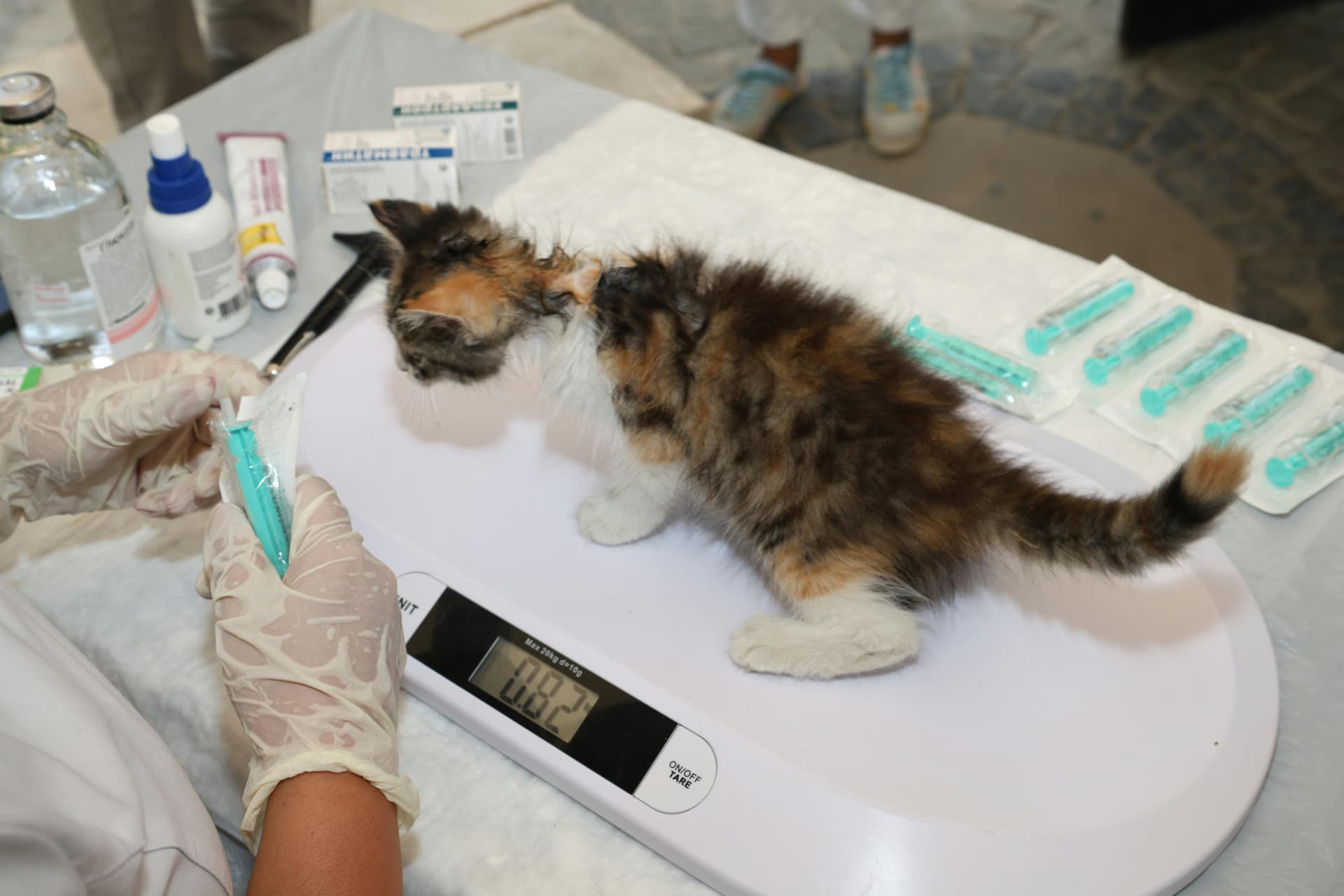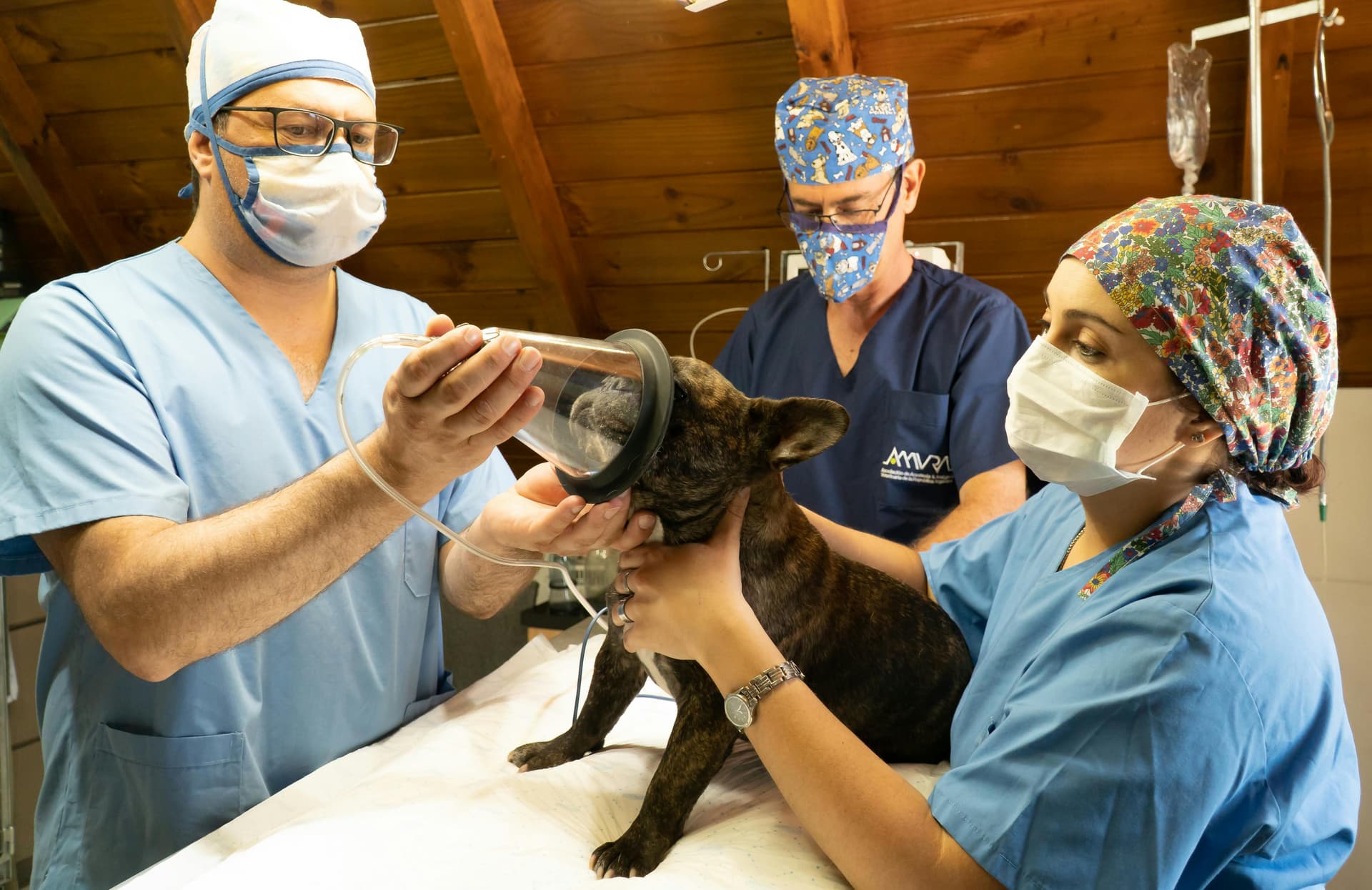If you’ve booked a spay or neuter surgery for your cat, chances are you’ve wondered: “Do I need pet insurance before this, or can it wait until later?” It’s a smart question, and the timing makes a huge difference.
At PetCoverage.ai, we see cat parents face this dilemma all the time. Spay and neuter are considered routine surgeries, often costing $200–$500. Most families think, I can budget for that, no problem. But what happens if something doesn’t go as planned? A torn incision, a reaction to anesthesia, or an unexpected infection can raise the bill to $2,000–$4,000 or more.
That’s when pet parents realize too late that insurance started after the surgery won’t cover what’s happening right now.
So, should you get pet insurance for your cat before spaying or neutering? The clear answer is yes, because of coverage rules, waiting periods, and the reality of post-surgery risks. Let’s break it down so you can decide with confidence.
Coverage Gaps That Catch Cat Parents Off Guard
Pet insurance is designed to help cover the cost of accidents, illnesses, and sometimes wellness care. But here’s the catch: most basic plans do not cover routine spay or neuter surgeries unless you add a wellness package. That means the surgery itself may still be out of pocket.
So why bother? Because the real danger isn’t the planned procedure, it’s the unplanned complications afterward. Accident & illness coverage can help with:
Emergency hospitalization
Diagnostic tests like bloodwork, x-rays, or ultrasounds
Medications for infection or pain
Secondary surgeries if complications arise
Without insurance, you’re responsible for all of it. With insurance active before the procedure, post-surgery issues can be eligible once your waiting period is complete. That’s where the protection matters most.
If you’re comparing plans, look for:
Accident & Illness coverage (the true safety net).
Wellness add-on if you want help with the cost of the spay/neuter itself.
High annual limits so a single complication doesn’t max out your coverage.
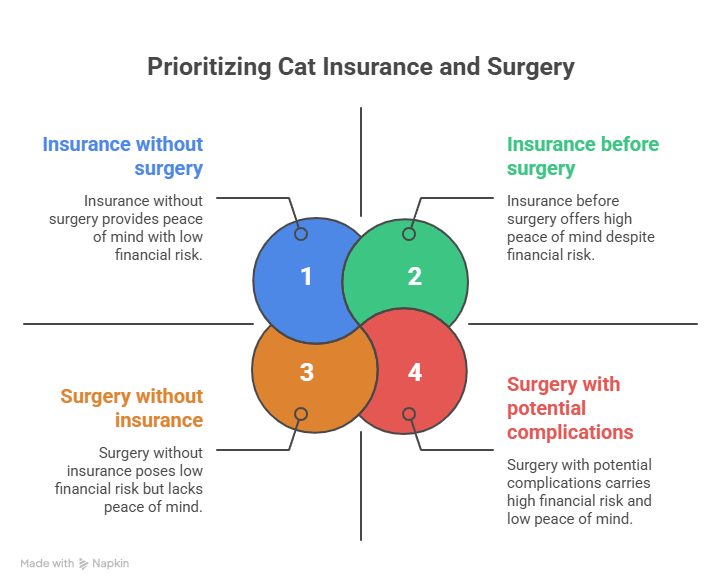
Timing Is the Deciding Factor
The most important part of this decision is timing. Pet insurance has waiting periods. Here’s what you need to know:
Accident coverage may start in as little as 2–5 days.
Illness coverage often takes 14–30 days.
Orthopedic issues can have waiting periods of 6 months or more.
If you sign up for insurance after the spay or neuter, and your cat develops an infection or complication during recovery, that condition will usually be labeled pre-existing. In plain terms: it won’t be covered.
That’s why enrolling before surgery is so important. Even if the policy doesn’t pay for the spay itself, it creates a safety net for any follow-up problems. The small monthly premium buys you peace of mind during and after the procedure.
The Financial Reality of Complications
Let’s talk real numbers. A routine spay or neuter may be manageable for most families. But complications can multiply costs fast:
Incision repair: $500–$1,000
ER visit with overnight stay: $1,500–$3,000
Severe infection treatment: $2,000+
Anesthesia complication: $2,500–$4,000
According to the American Pet Products Association (APPA), cat owners spend an average of $201 annually on surgical veterinary visits (2023–2024 U.S. pet spending report). But that number reflects averages; it doesn’t capture the nights when a single emergency spikes into thousands.
One serious incident could cost more than five years’ worth of premiums. That’s why many cat parents make the call early: the monthly fee is worth avoiding the “what if” debt. Insurance transforms those unexpected thousands into a predictable, budget-friendly number.
A Real-Life Example: Luna’s Story
Luna, a playful two-year-old rescue, had her spay scheduled. The surgery went well, but within days she developed swelling and wouldn’t eat. Her family rushed her to the ER. After IV fluids, antibiotics, and a minor surgical repair, the total bill reached $3,400.
Fortunately, Luna’s parents had signed up for accident & illness coverage two weeks before surgery. Because the waiting period had passed, their claim was approved. They paid under $500 out of pocket.
At PetCoverage.ai, we see cases like Luna’s often. Our free policy review tool helps families catch gaps before moments like this. In Luna’s case, adding the right plan in time made all the difference, not just in money, but in giving her family the ability to say “yes” to care without hesitation.
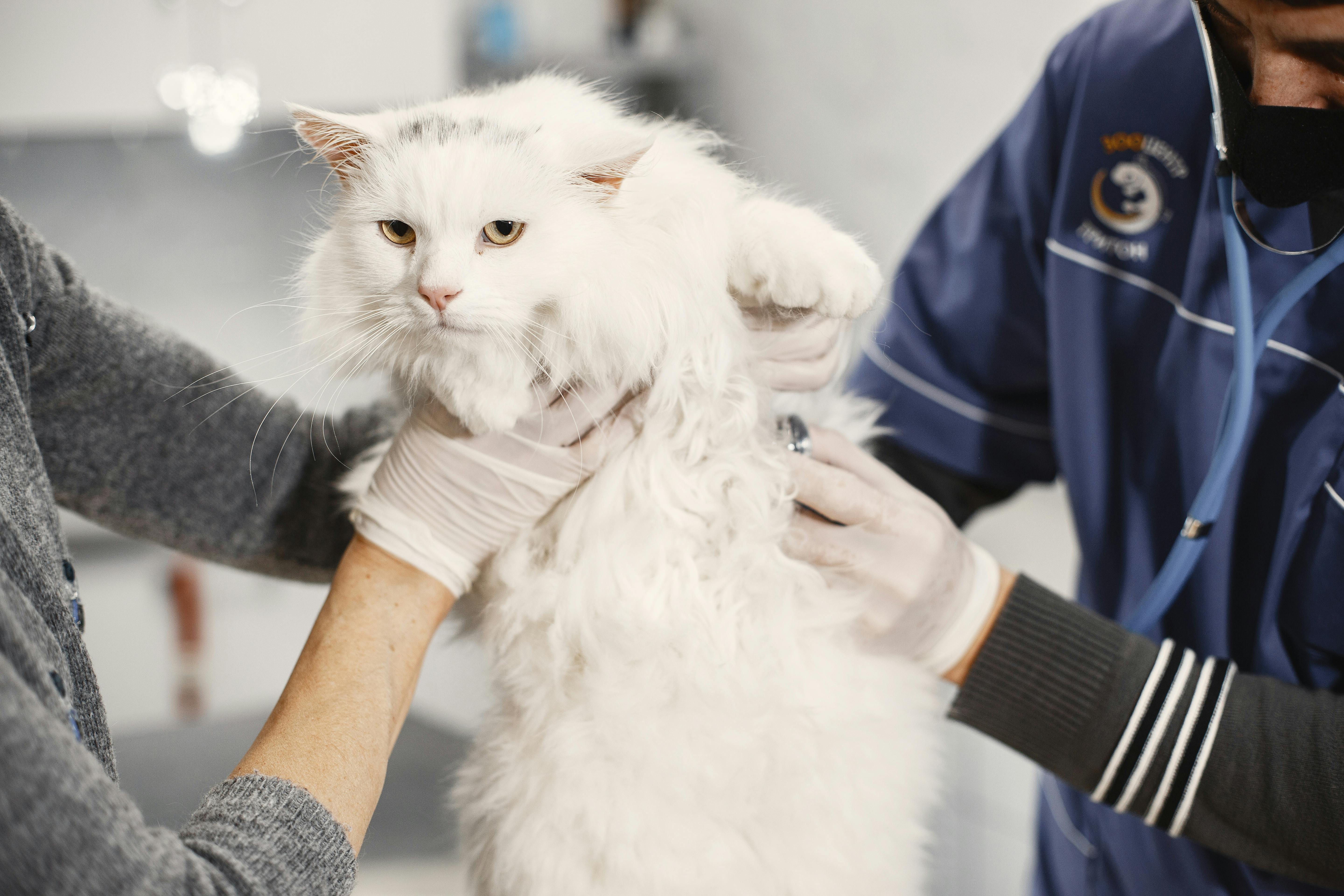
Frequently Asked Questions (FAQs)
1. Will pet insurance cover the spay or neuter surgery itself?
Not usually. You’ll need a wellness add-on for routine spay/neuter coverage.
2. If my cat has complications, will they be covered?
Yes, if you started coverage before surgery and cleared the waiting period.
3. How soon should I buy insurance before the procedure?
At least 2–4 weeks before, to ensure waiting periods don’t block coverage.
4. Can I cancel insurance after the surgery?
You can, but it leaves your cat unprotected for future emergencies or chronic conditions.
5. Is pet insurance worth it for young cats?
Yes, premiums are lower, and it prevents exclusions for future conditions.
Key Takeaways
Spay and neuter surgeries are common, but complications like infections or anesthesia reactions can lead to vet bills higher than expected. The biggest mistake cat parents make is assuming “routine” means “cheap.”
Focus on coverage that matters: Look for policies that include surgery-related emergencies, pain management, and follow-up care, not just accidents.
Don’t be fooled by wellness add-ons alone: Some plans only cover the surgery itself, leaving you unprotected if recovery takes a turn.
Act before surgery day: Enrolling your cat early clears waiting periods and ensures coverage kicks in when you need it most.
We broke down why timing matters, what insurance covers before and after spay/neuter, and how to avoid paying thousands out-of-pocket. Share this with another cat parent prepping for surgery, they’ll thank you later.
Stay connected with PetCoverage.ai: For policy reviews, plan comparisons, and pet parent tips, follow us on Facebook, Instagram, TikTok, and LinkedIn.



